As long as people have been having thoughts, they have been having unwanted ones. For most people, unwanted thoughts are little more than a nuisance or a curiosity. But for those with Obsessive Compulsive Disorder (OCD) and related anxiety disorders, these thoughts can be a debilitating nightmare. Unwanted thoughts often trigger unwanted emotions (anxiety, panic), which in turn lead to compulsive attempts to avoid, suppress, and control these emotions.
Traditional Treatment Strategies for OCD and Anxiety
Before the development of psychological treatments, disorders such as OCD and other anxiety conditions were often considered spiritual problems. The sanctioned response was to do your compulsions harder and more frequently. And for those who drew too much attention, a not uncommon result was persecution, imprisonment, or being subjected to brutal, misguided experiments.
When psychoanalysis became the new fad, the approach was to talk about your obsessions and compulsions while intentionally attributing meaning to the content of your thoughts. With the help of their analyst, people with OCD and anxiety sought to find the secret, deep-seated meaning behind their obsessive thoughts. This was worse than pointless – it was a disaster. Today, the very idea that obsessions have some subconscious meaning is rejected by all OCD experts. Unfortunately, earlier generations of those with OCD and related anxiety conditions spent years in psychoanalytic therapy trying to find meaning in thoughts that are essentially meaningless.
Behavioral and Cognitive Strategies for OCD and Anxiety
The next chapter to unfold was behavioral therapy, in which the primary focus was not on what we think or feel, but on what we do. By sometimes literally forcing people to expose themselves to what scares them, people with OCD and other anxiety disorders would stop reinforcing distorted thoughts and maladaptive behaviors. But the results were mixed. Resisting the urge to do compulsions or avoidant behaviors provides relief, but doesn’t leave the sufferer with much of a strategy for their obsessive thinking. Like crash diets, results come quickly, but often return – sort of like when contestants on The Biggest Loser go back to their old eating habits and re-gain most of the 150 pounds they lost. With strict behavioral therapy, the individual often sees a quick reduction in OCD symptoms, but they don’t learn a different way of thinking about their anxiety. When the anxiety returns, often the OCD returns with it.
Then came cognitive therapy, which recognized that the anxiety-provoking thoughts were often just plain wrong. From a cognitive therapy perspective, OCD and other anxiety disorders develop because our thoughts are distorted, and we craft poor cognitive strategies for addressing them. Unfortunately, while this perspective provides some relief, it doesn’t always result in less time at the bathroom sink.
Combining the two theories into Cognitive Behavioral Therapy (CBT) was the real breakthrough in treatment for Obsessive Compulsive Disorder and related anxiety conditions. With CBT, the client challenges his/her distorted thinking with rational alternatives, and concurrently changes his/her maladaptive compulsive and avoidant behaviors. Over a comparatively short period of time, the client learns that the obsessions are not important, and experiences a reduction in the intensity and intrusiveness of the unwanted thoughts. Empirically speaking, Cognitive Behavioral Therapy (specifically, Cognitive Restructuring and exposure-based therapies such as Exposure and Response Prevention) has repeatedly been found by numerous controlled research studies to be the most effective treatment for OCD and most other anxiety disorders.
Mindfulness-Based Therapies for OCD and Anxiety
However, something was still missing. It turns out that people with OCD and other anxiety disorders have the same kinds of thoughts as people without these conditions – both wanted and unwanted. The primary difference between people with OCD / anxiety and those without an anxiety disorder is not the content of the thoughts, but their perspective on their thoughts. If one’s perspective is that a particular thought is “bad”, then that thought may become problematic. In short, the thought is not the problem – the valuing of that thought as a “bad” thought is the problem. This is where Mindfulness-Based Cognitive-Behavioral Therapy (MBCBT) comes in to play.
If you can imagine your thoughts as a line of train cars, people with OCD and other anxiety disorders tend to keep stopping the train to make sure everyone has a ticket. What MBCBT asks is that you simply observe the 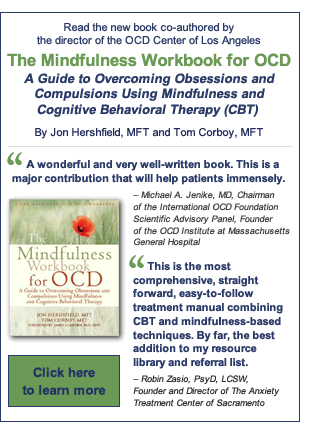 train passing. This means acknowledging that unwanted thoughts are occurring, but not evaluating these thoughts as being particularly meaningful. Instead of changing the content of what the thought itself means, you are changing your perspective towards the thought and how you process the fact that the thought is occurring. It is not happening to you. It is simply happening.
train passing. This means acknowledging that unwanted thoughts are occurring, but not evaluating these thoughts as being particularly meaningful. Instead of changing the content of what the thought itself means, you are changing your perspective towards the thought and how you process the fact that the thought is occurring. It is not happening to you. It is simply happening.
MBCBT is, quite simply, the latest fine-tuning of CBT, which is the most effective treatment for OCD and related disorders. With MBCBT, we don’t try to control what thoughts happen – we choose how we think about our thoughts and how we interact with them. MBCBT combines the three modalities that research has shown bring about positive change for OCD and anxiety sufferers: Mindful Acceptance (a non-judgemental relationship to our thinking), Cognitive Restructuring (challenging distorted thoughts with more rational alternatives), and Behavioral Modification (changing what we do in response to our unwanted thoughts).
Ultimately, freedom from OCD and anxiety is not the eradication of unwanted thoughts and feelings. After all, everybody has unwanted thoughts and feelings. Freedom from OCD and anxiety is the ability to have and accept whatever thoughts and feelings you are experiencing, and to be able to choose which of those thoughts and feelings merit your attention.
•The OCD Center of Los Angeles is a private, outpatient clinic specializing in Cognitive-Behavioral Therapy (CBT) for the treatment of Obsessive-Compulsive Disorder (OCD) and related anxiety based conditions. In addition to individual therapy, the center offers six weekly therapy groups, as well as online therapy, telephone therapy, and intensive outpatient treatment. To contact the OCD Center of Los Angeles, click here.












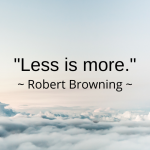





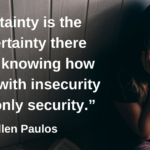

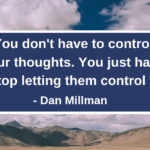








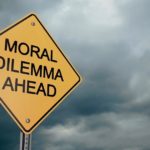






















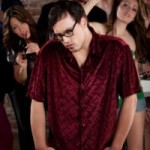







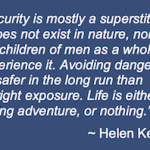
3 Comments
is medication ever useful for someone with BDD and depression and social anxiety??
Robin,
Medication is frequently prescribed for individuals with Body Dysmorphic Disorder (BDD). The most common medications prescribed are selective seratonin reuptake inhibitors (SSRI), but others are used as well. If taking an SSRI, most BDD experts would recommend a course of Cognitive Behavioral Therapy (CBT) in conjunction with the medication.
I have found The Mindfulness & Acceptance Workbook for Anxiety (whiach is based on Acceptance and Commitment Therapy) to be a powerful resource in dealing with anxiety and OCD.